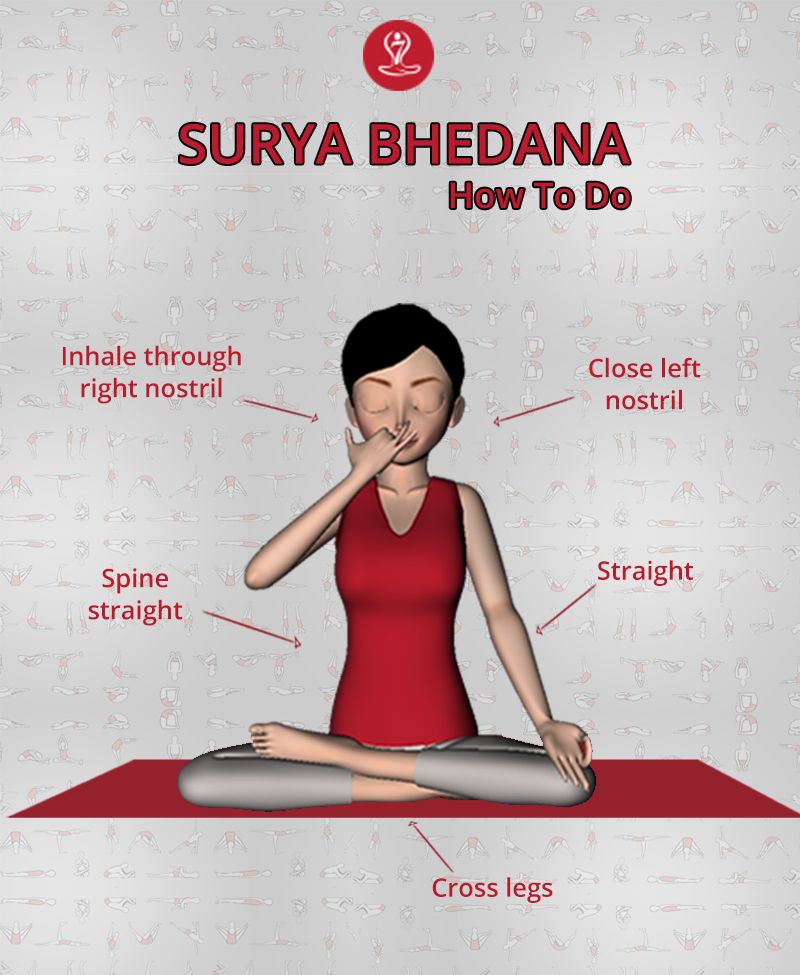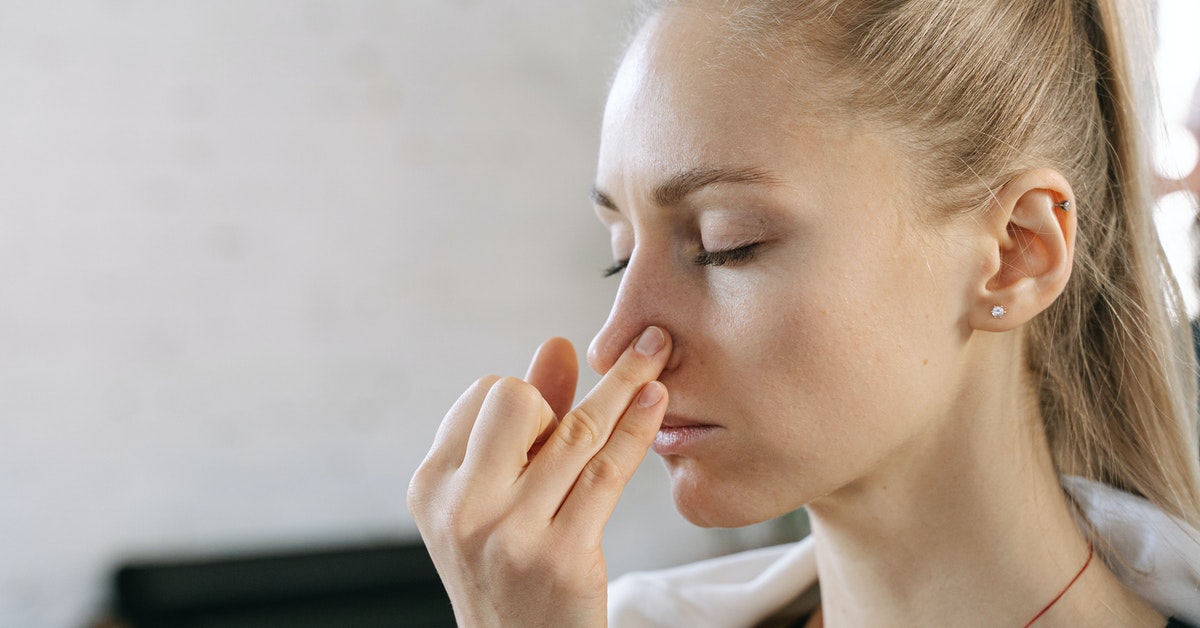The word Surya in Sanskrit means ‘sun’. In yogic terms, this refers to the Pingala Nadi. Whereas, the Sanskrit word Bheda means ‘to pierce’ or ‘to awaken.’ Thus, the word Surya Bheda means to pierce through and purify the Pingala Nadi.
This pranayama is very effective to increase vitality. Learn the correct method to perform Surya bheda pranayama also known as Surya Bhedana Pranayama below.
Mention In Scriptures
The following are verses from Hatha Pradipika, Chapter 2 on Pranayama.

Translation: “Sitting comfortably, the yogi should become fixed in his posture and slowly breathe the air in through the right nostril” [1].

Translation: “Retention should then be held until the breath diffuses to the roots of the hair and tips of the nails. Then slowly exhale through the left nostril” [1].

Translation: “Suryabheda is excellent for purifying the cranium, destroying imbalances of the wind dosha and eliminating worms. It should be done again and again” [1].

Procedure
- Take a comfortable meditative asana. Your head and spine should be straight. Your hands should be placed on your knees either in chin or jnana mudra.
- Now, close your eyes and make your body comfortable and relaxed.
- After a minute or so of relaxing, adopt nasagra mudra.
- Then, close your left nostril with your ring finger and inhale slowly and deeply through your right nostril.
- At the end of deep inhalaltion, close both your nostrils and retain your breath. While retaining your breath, perform jalandhara and moola bandhas.
- Maintain this position for a few seconds when beginning to practice this pranayama.
- Now, release first moola bandha and then jalandhara bandha.
- Make your head upright once again and exhale slowly through the left nostril by keeping the right nostril closed with the ring finger.
- This completes one round.
Duration
Start with 10 rounds. Slowly as you become comfortable with practice, you can increase the duration of practice to 10 to 15 minutes. Also, slowly increase the duration of breath retention over a period of months.
At first the ratio of inhalation:hold:exhalation can be 1:1:1. Later, it can be increased to 1:2:2. For example, in the first case, if you take 4 seconds inhale, then retention and exhale should be of the same duration. In the second case, retention and exhale should be double the inhale.
Surya Bheda Pranayama Precautions
- Don’t practice this pranayama after consuming food or on a heavy stomach.
- Don’t perform this pranayama for more than 30 minutes as it may cause imbalance in the breathing cycle.
- Inhalation should happen through right nostril and exhalation through left nostril.
- Don’t practice this pranayama if you suffer from:
- High Blood Pressure
- Heart Condition
- Epilepsy
- Don’t perform this pranayama if the weather is very hot, or you are having temperature.
- This is a very powerful pranayama and it is advised to perform this under expert guidance.
Surya Bheda Pranayama Benefits
- This pranayama is very effective to counter or balance the balance the vata dosha (wind element).
- It activates the pingala nadi and increases the pranic energy.
- It helps in increasing extroversion in social life.
- It helps in becoming more physically active,
- It helps in alleviating depressive/low mood.
- It helps in reducing social anxiety.
- It makes the mind more alert and sharper.
- It is helpful in treating low blood pressure.
- It is helpful in treating infertility.
- It is helpful in treatment of worms.
References
- (All the verse translations in the article are from this book) Book: Hatha Yoga Pradipika Commentary by Swami Muktibodhananda
- Book: Asana Pranayama Mudra Bandha by Swami Satyananda Saraswati
- Book: The science Of Pranayama by Sri Sivananda.
- Book: Light on Pranayama by B.K.S Iyengar.
